6. Let The Corpses Tan (2017)
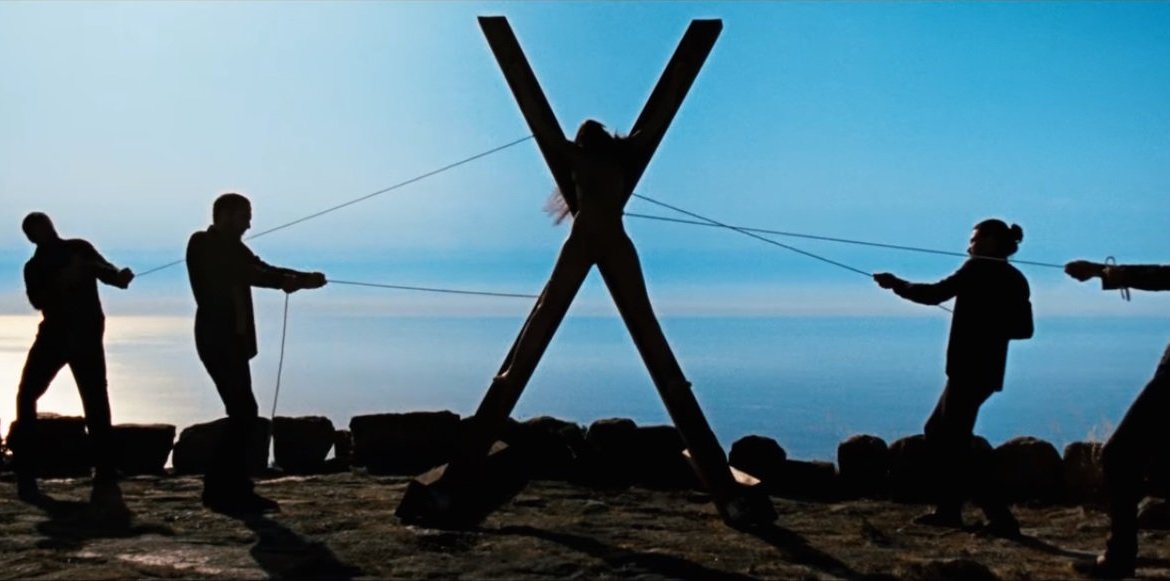
If Deadlock psychedelicized the spaghetti western Let The Corpses Tan (2017) picked it up acid-dripping and added some ecstasy to the mix. Shot with the super-abstract and sporadically shifting style French-Belgian duo Hélène Cattet and Bruno Forzani are known for Let The Corpses Tan is an onslaught of images violent and perverse at a rapid-fire fever pace.
Ostensibly a spaghetti western standoff between a small gang of robbers (led by Stéphane Ferrara) who took 250kg of gold from an armored truck, the residents of the seaside estate they hide out in, Luce (Elina Löwensohn) and her bodyguard Brute (Bernie Bonvoisin), and the law represented by two highway patrol bikers (Hervé Sogne & Marilyn Jess) the film is more experiential than narrative based – more about the rhythm of the editing and the power of individual images – vibrant colors extreme framing and momentum – and surreal sequences bearing no overt relation to the narrative but exploring iconographies of the unconscious that riff on genre convention.
The film’s soundtrack works in homage to Ennio Morricone’s famous western film scores and a hyperreal foley both extremely sensitive to texture and underscoring silent movements like a camera pan with tensing sounds of stretching leather.
7. Zachariah (1971)
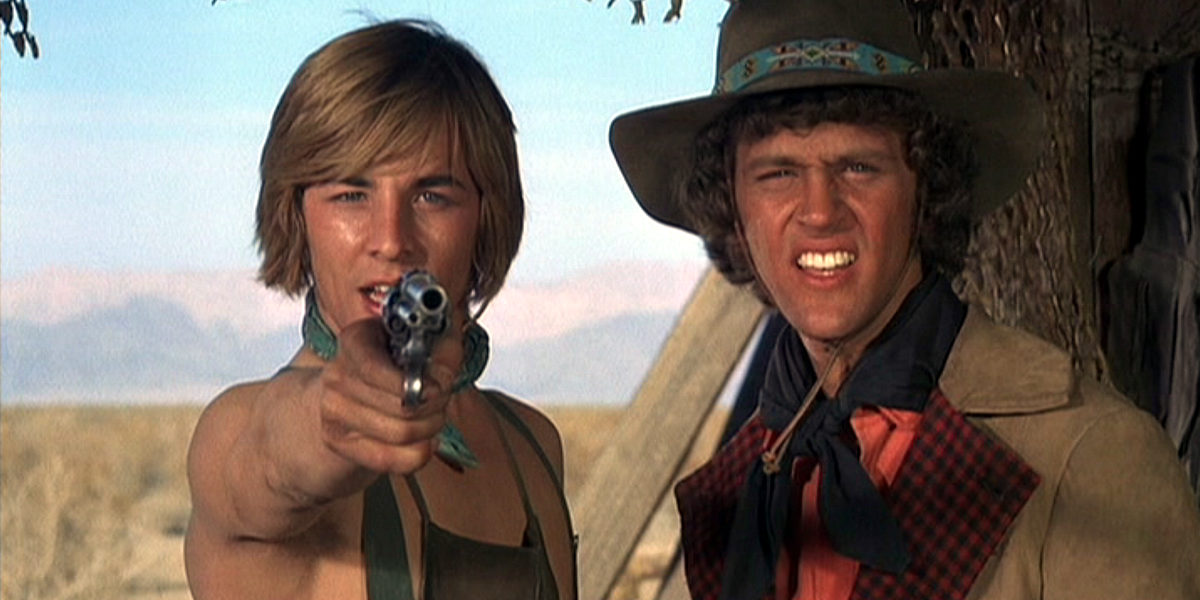
Zachariah, “the first electric western” is a kind of western rock opera, a tale of wayward brothers interspersed with psych-rock musical numbers as rock bands inexplicably tour the old west.
The film mixes up counterculture and biblical imagery in the bizarre journeys of Zachariah (Josh Rubenstein) and Matthew (Don Johnson), (loosely based on the characters of Herman Hesse’s 1930 novel Narcissus and Goldmund and apparently inspired by a meditation duel between George Harrison and John Lennon observed by screenwriter Joe Massot) two young fledgling gunslingers who after joining up with a roving rock band/bandit gang (Country Joe and the Fish) and earning some notoriety for themselves as gunslingers, initiate into the competitive duelling circuit and realize their quest for glory will inevitably have to end with one killing the other. The two part ways thereafter, Zachariah questioning the way of the gun and Matthew becoming the black hat his greatness needs him to be.
The film leans heavily on the allegorical, characters like Cain (drummed Elvin Jones), the number one gunslinger in the west and the wise old man in the hills (William Challee) who becomes Matthew’s mentor, but does so within the playful mainstream frame of a youth adventure movie.
8. Greaser’s Palace (1972)
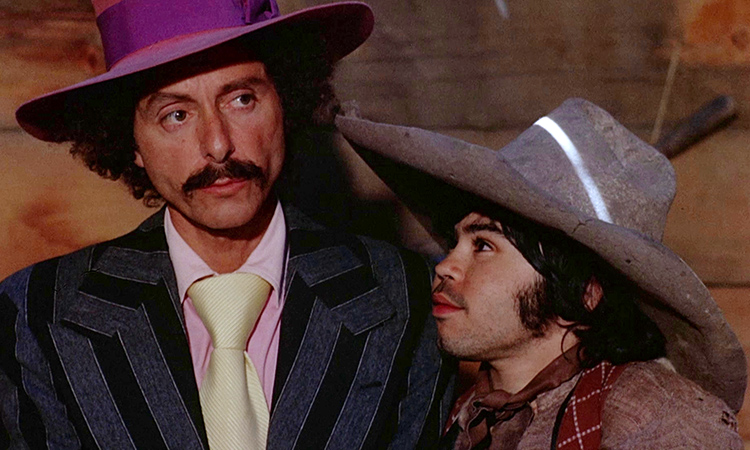
Director Robert Downey Sr. known best for his satirical comedies like Putney Swope (1969) creates with Greaser’s Palace (1972) a wild west reimagining of the story of Jesus Christ that plays somewhere between the surrealist parables of Alejandro Jodorowsky and spoof movies like Blazing Saddles (1974) – though one is never sure exactly where.
Alan Arbus plays the film’s Christ figure, Jesse, a man parachuted down from the sky in the middle of the American west, amnesiac and unsure of his purpose beyond a need to get to Jerusalem to become an “actor, singer, dancer.” He wears a 1940’s zoot suit, walks with a Charlie Chaplin gait, performs miracles, and dances a boogie-woogie. Jesse finds himself in the town of small-time tyrant Seaweedhead Greaser (Albert Henderson) who stages just the kind of song and dance talent show Jesse stands to win at, mostly as a vehicle for his daughter Cholera’s (Luana Anders) singing, and to the murder of many an inferior performer.
Jesse tries his dance out on stage to little avail, but when he goes for the screaming in agony bleeding from the hands trick he wins over the crowd completely. It is degrading. Jesse just wants to dance. But he becomes anyways a figure of real influence in the community, performing miracles disruptive to the dominion of Seaweedhead, like the undoing of his murders.
But as the film progresses its highly allegorical plot begins to border on incomprehensibility, and its jokes feel more like a subversion of the movie than a natural aspect of it. Bizarre and understated, at turns reverent and vulgar, one is never quite sure what movie one is watching with Greaser’s Palace, which may, in the end, be itself the joke.
9. A Girl is A Gun (1971)
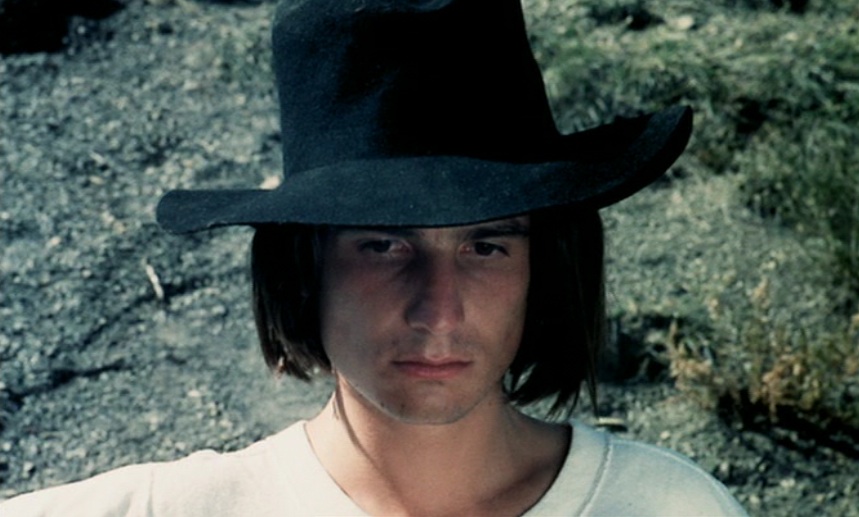
A cartoon cutout western and a movie-long slapstick chase scene shot like arthouse meditation, Luc Moullet’s 1971 A Girl is a Gun is the very simple story of Billy the Kid (Jean-Pierre Léaud) robbing a stagecoach and running with Ann, (Rachel Kesterber) a girl he finds in the desert buried in the sand. About to explain how she got there Billy stops her, telling her no one cares about her past, or about his for that matter – an address to the audience, a doing away with exposition and reason. Sometimes a girl just comes out of the sand. So be it.
What follows is a series of visual gags as the two run from bounty hunters and natives and overcome their environment, an impossible ever-shifting landscape at too high an elevation for nightfall – don’t try to figure it out. It is as if Jacques Tati shot an acid western, that same ultra-wide focus on the figure in space, and a no-budget version of Tati’s inventive physicality. At the core of the film is the ever-shifting relationship between Billy and Ann, enemies to lovers and back again, a comic wrestling through different configurations which at its funniest sees Billy trying to kill himself whatever way possible – and Ann, in the name of keeping Billy alive so as to suffer as much as he possibly can – again and again saving him – shooting him down from the gallows once he has to the law given in.
10. El Topo (1970)
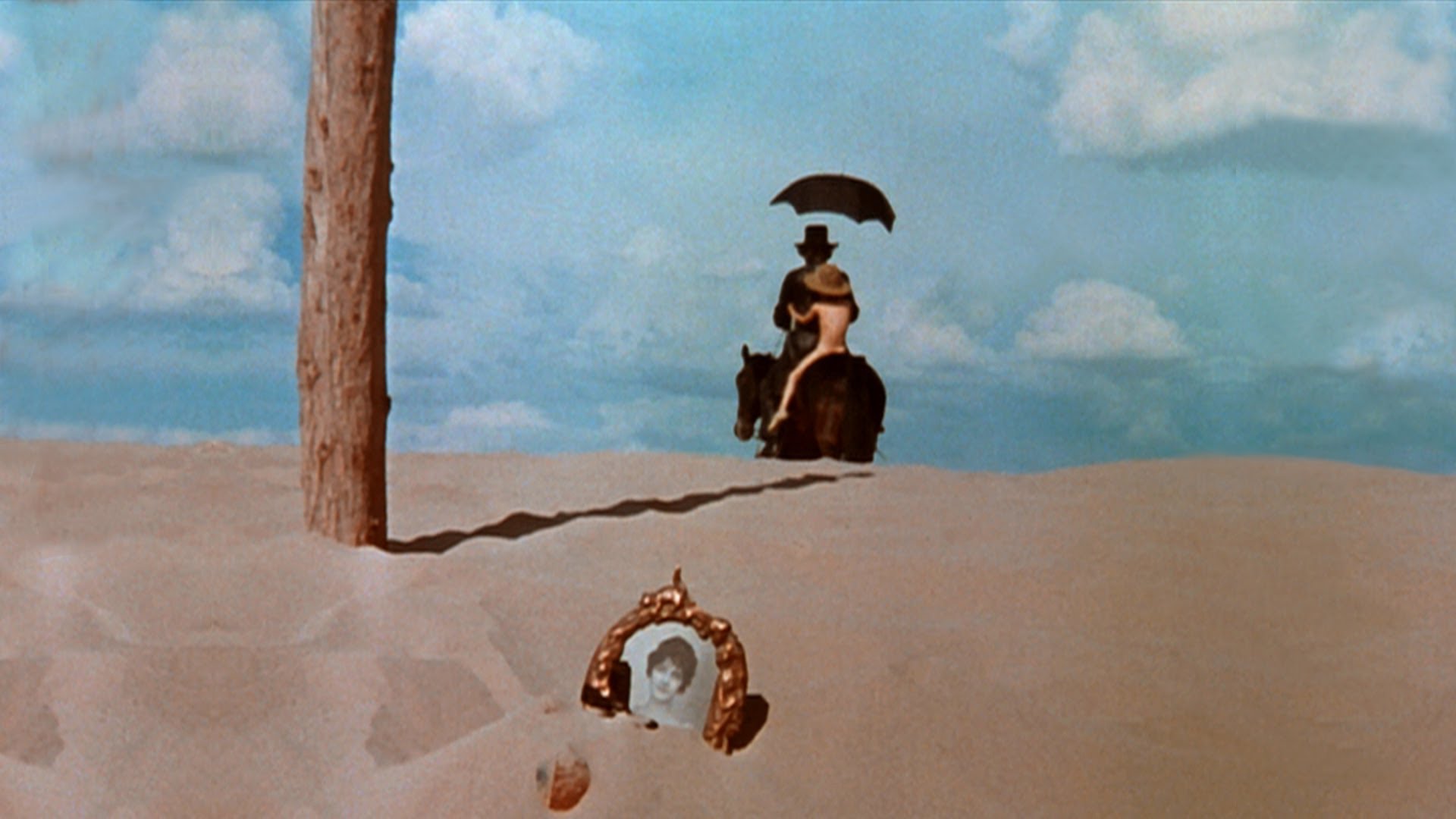
Alejandro Jodorowsky’s El Topo (1970) is not only the film said to have pioneered the acid western but also the one that arguably epitomized it, fulfilled it in its very conception. A legendary cult film credited for creating the midnight movie circuit – which would later be home to and responsible for the success of cult classics like The Rocky Horror Picture Show, Pink Flamingos, and Eraserhead – El Topo is the ultimate cinematic head-trip, part acid and esoterica allegory of spiritual development, part ribald carnivalesque farce.
Written and directed by and starring Jodorowsky himself as the gunslinger ‘El Topo’ (the mole) – a man of pure ego who declares himself God and seeks to become the number one gunslinger in the west not by ascension but by killing those better than him, the film traces his journey from greedy mercenary to questing gunslinger, seeking and defeating each of the masters by whatever means necessary – each master representing a unique strength and weakness which El Topo in his lack of honor finds a different way to cheat and exploit – before finding at the end of his selfish journey a grave punishment and the beginning of a new quest toward redemption as a martyr figure for a subterranean leper colony.
The film is composed with Jodorowksy’s singular visual style, more painterly than traditionally cinematic (think Bosch or Bruegel) large tableau scenes elaborately and meticulously staged with dozens of bodies – often disfigured, disabled – used like human sculpture and vivid symbolic imagery, sometimes invoking tarot, astrology, or other hermetic traditions, other times like pure poetry made manifest – a sea of rabbits, a man encased in honeycombs, an entire town of hanging bodies, – set against the stark white and blue of the Mexican desert.
Jodorowsky does not mean to merely entertain with El Topo or any of his movies. Instead, he has an earnest conviction to make films that would transform its viewers, broaden minds, and change the world, and El Topo certainly has left its mark on cult and surrealist films, on the western genre, and countless movie lovers and artists from across disciplines.